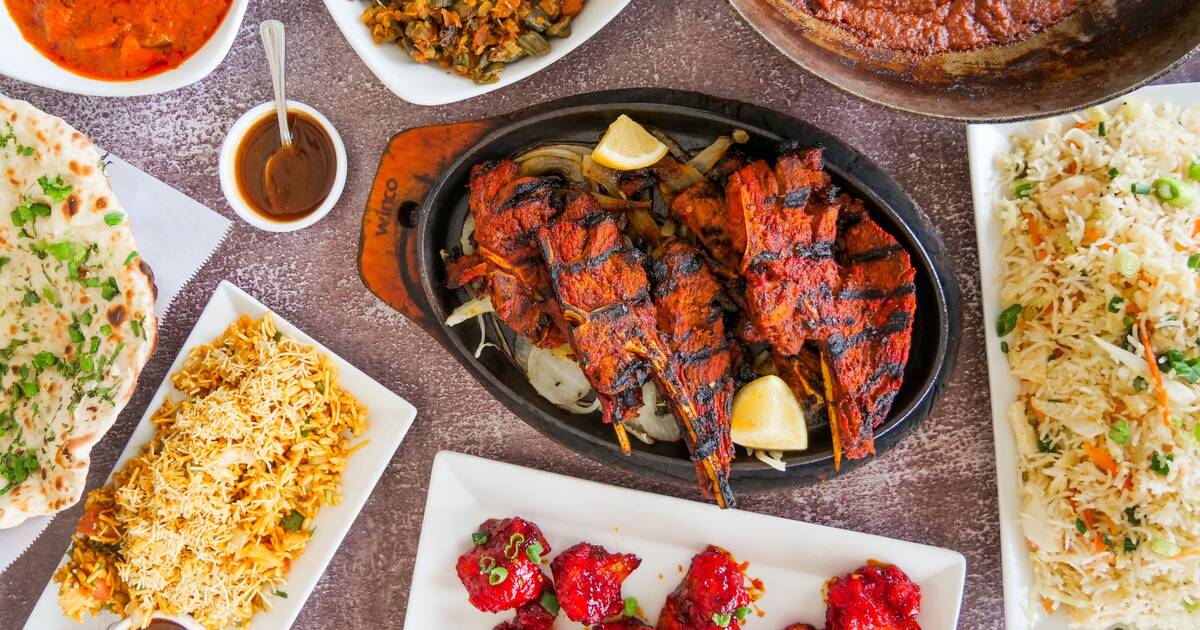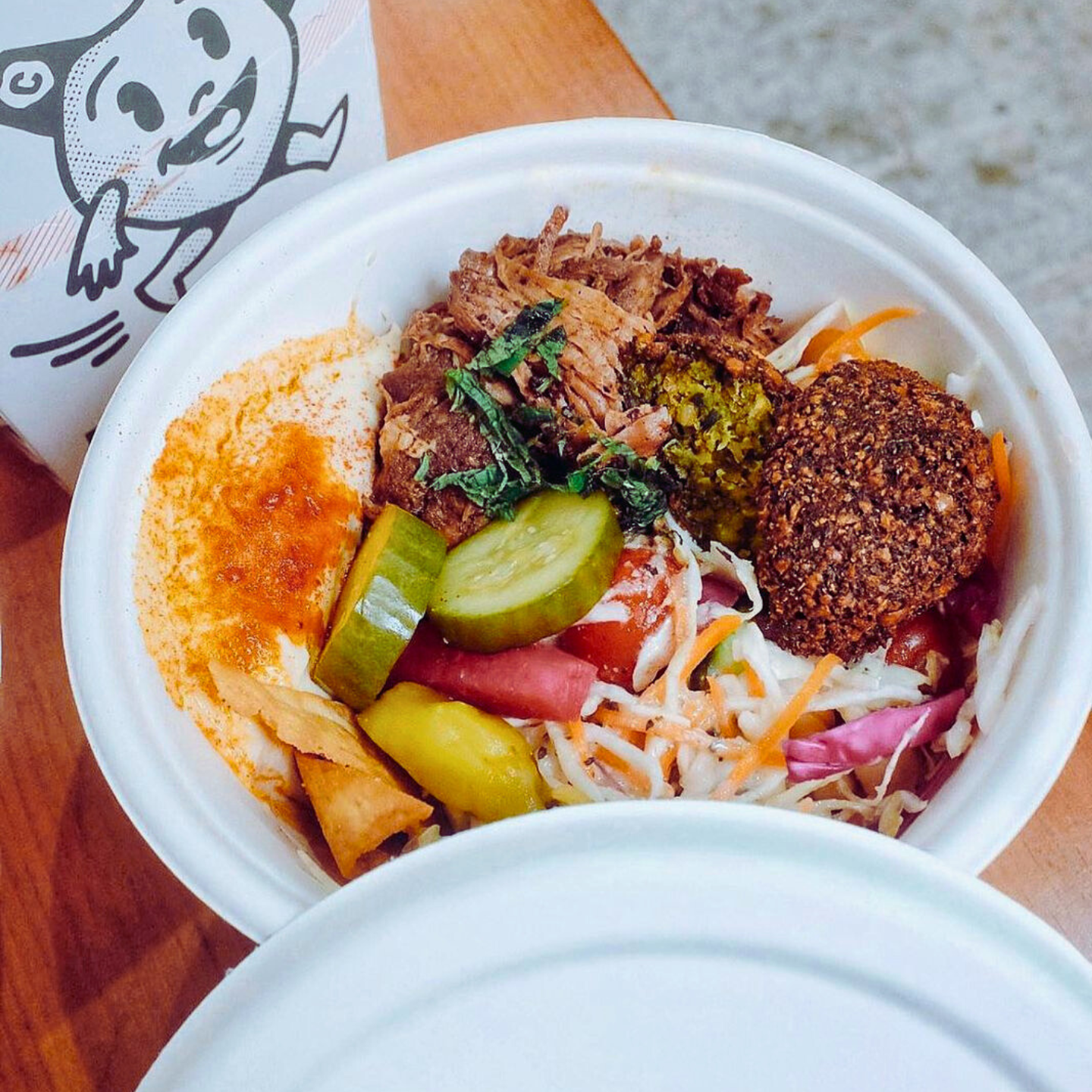Exploring the Diversity of Middle Eastern Food and Halal Food: A Culinary Trip
When you think of Middle Eastern food, a globe of varied tastes and rich traditions comes to mind. Each meal informs a tale, formed by the land and its people.
The Significance of Middle Eastern Food: Tastes and Active Ingredients
Middle Eastern cuisine bursts with dynamic flavors and rich components that transport your taste to far-off lands. When you immerse yourself in this culinary globe, you'll uncover a delightful mix of seasonings like cumin, coriander, and sumac, each adding deepness to every dish. You'll relish the freshness of natural herbs such as parsley and mint, elevating dishes with their aromatic top qualities.

As you check out the range of healthy proteins, from tender lamb to delicious hen, you'll find that barbecuing and seasoning enhance their tastes magnificently. Whether it's a cozy pita packed with mouthwatering fillings or a hearty stew, the ingredients in Middle Eastern food produce a symphony of preferences that invites you to savor every bite.
Standard Cooking Techniques: A Culinary Tradition
Cooking in the Middle East is soaked in tradition, with methods passed down through generations that show the region's abundant background and society. You'll locate that numerous approaches concentrate on slow-moving food preparation and communal sharing, stressing the value of household and community in dishes. Techniques like cooking over open flames, seasoning meats in seasonings, and utilizing clay pots for stews showcase the tastes fundamental in neighborhood ingredients.
As you dive much deeper, you'll discover the art of cooking, from flatbreads to breads, often performed in communal ovens, including a special touch to the culinary experience. The usage of spices is additionally a vital method; mixing them ideal can elevate any kind of dish.
These classic approaches not only maintain the essence of Middle Eastern food but additionally connect you to the dynamic tales and customs of individuals that've prepared these meals for centuries.
The Role of Halal in Middle Eastern Food
When discovering the rich tapestry of Middle Eastern food, you'll promptly observe that halal principles play a necessary role fit the food society (Halal restaurant Vancouver). Halal, indicating "acceptable" in Arabic, overviews just how food is sourced, prepared, and consumed. This implies only certain pets can be consumed, and they must be slaughtered in a humane and ritualistic fashion
As you dive deeper, you'll see that halal isn't nearly dietary constraints; it reflects a wider moral dedication to health and wellness and sustainability. Many Middle Eastern meals emphasize fresh active ingredients, dynamic spices, and aromatic natural herbs, aligning flawlessly with halal techniques.
Eating halal usually fosters a sense of area and respect, as dishes are shared among friends and family. Whether you're appreciating a spiced kebab or a great smelling rice meal, comprehending halal's function enhances your culinary experience, connecting you to the customs and values that specify Middle Eastern food.
Signature Recipes From Various Areas
As you discover the varied regions of the Middle East, you'll discover that each area flaunts its own trademark dishes, reflecting regional components and cooking practices. In Lebanon, you can not miss out on the delicious tabbouleh, a fresh salad made with parsley, bulgur, and tomatoes. Traveling to Syria, and you'll come across kibbeh, which combines ground meat and spices, typically offered with yogurt.
In the Gulf states, relish the rich machboos, a spiced rice recipe with meat or fish and shellfish. Venture to Turkey, where you'll indulge in the succulent döner kebab, expertly skilled and served in various means.
Do not ignore Iran, home to the fragrant saffron-infused rice dish called tahchin, layered with chicken or lamb. Each dish tells a tale, welcoming you to experience the special tastes and cultures of the Middle East. Embrace this cooking trip, and let your preference buds discover!
The Impact of Culture and Faith on Middle Eastern Food
Society and religion play a crucial duty in shaping Middle Eastern food, influencing click to investigate every little thing from ingredient choices to cooking techniques. Islamic nutritional laws dictate halal methods, leading to specific techniques of pet massacre and food preparation.
During Ramadan, for example, you'll locate an abundance of recipes created for breaking fast, showcasing public traditions. When you explore Middle Eastern food, you're not just tasting food; you're experiencing a rich narrative woven via society and confidence, where every bite informs a story of heritage, community, and spiritual link.

Exploring Street Food: A Preference of Everyday Life
Road food is a vivid expression of everyday life in the Middle East, offering a look right into the area's culinary spirit. As you stroll with busy markets or lively streets, you'll experience a plethora of tempting scents and flavors. Take a moment to appreciate newly made falafel, crispy outside and tender inside, or indulge in shawarma, skillfully seasoned and smoked to perfection.
Road food isn't just regarding taste; it's concerning connection. You'll see locals collecting, sharing laughter, and enjoying their meals with each other. Go in advance, submerse on your own in the globe of Middle Eastern road food and experience its rich flavors firsthand.
Parties and Community: Food as an Unifying Pressure
While food commonly brings individuals with each other, in the Middle East, it works as the heart beat of celebrations and neighborhood celebrations. Picture on your own at a vibrant celebration, bordered by the aroma of spiced kebabs and fresh baked bread. You 'd find family members sharing plates of hummus and tabbouleh, each meal informing a tale of practice and love.
During Ramadan, the iftar meals unite loved ones as they damage their rapid together, highlighting gratefulness and link. Weddings include fancy banquets, where guests indulge in sweets like baklava and kunafa, celebrating love and unity.
You could observe that food isn't just nutrition; it's a symbol of hospitality and togetherness (Halal catering Vancouver). Whether it's a basic celebration or a grand celebration, the act of sharing a dish fosters bonds, strengthens partnerships, and creates long lasting memories. Between East, food genuinely becomes a unifying force that transcends borders and celebrates the richness of community
Frequently Asked Concerns
What Are the Health And Wellness Conveniences of Middle Eastern Cuisine?
Middle Eastern cuisine supplies many health and wellness advantages. learn the facts here now You'll enjoy fresh ingredients, healthy and balanced fats, and a lot of flavors, promoting heart click this health and digestion. And also, its plant-based options can improve your general nourishment and power levels.
Exactly How Can I Discover Halal-Certified Dining Establishments Outside the Middle East?
You can locate halal-certified restaurants outside the Middle East by utilizing apps like Zabihah or HalalTrip, inspecting local listings, and asking for referrals from Muslim neighborhoods or close friends accustomed to the location's dining options.
Exist Vegetarian or Vegan Middle Eastern Dishes?
Yes, you'll discover lots of vegan and vegan Middle Eastern meals. Dishes like falafel, tabbouleh, and baba ghanoush are scrumptious choices. These dishes display the region's abundant flavors while satisfying plant-based diets. Enjoy!
What Are Typical Misconceptions About Middle Eastern Food?

You could believe Middle Eastern food is everything about meat, however that's not real. Many recipes display grains, vegetables, and fresh veggies. Furthermore, flavors and tastes differ widely, debunking the idea of uniformity in food.
Exactly How Do Regional Climates Affect Middle Eastern Cooking Styles?
Regional environments considerably influence cooking designs between East. You'll notice warmer locations prefer smoked meats and flavors, while cooler regions emphasize hearty stews and breads, showcasing the flexibility of neighborhood active ingredients and practices.